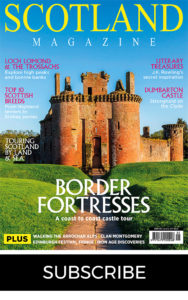MORE FROM SCOTLAND MAGAZINE
The Renaissance Kings: James III, James IV and James V of Scotland
James III, James IV and James V of Scotland ruled through a period of great change, each to varying degrees of success
The 15th century witnessed the dawning of the Renaissance, which swept across Europe, breaking light into the darkest crevasses of the Middle Ages. It was an irreversible period of enlightenment as Greek and Roman ideologies were rediscovered, revolutionising social, religious, and political thinking.
Brushes splashed out great works of art, books abounded, ornate buildings soared, international curiosity was unleashed, and sciences flourished across the continent – and Scotland was no exception, with a succession of Stuart kings overseeing this period of cultural transformation.
James III of Scotland
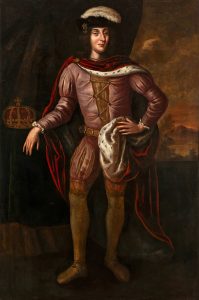
King James III, 1460- 1488, in Holyrood Palace. Credit: Royal Collection Trust/© His Majesty King Charles III 2024
Scotland’s fifth Stuart monarch didn’t make his relatively short life easy. Crowned at the age of eight (or nine; disputed) and in control by 17, James III either unwittingly or without regard, excelled at getting on the wrong side of the wrong people. From parliament and the clergy to ambitious nobility and his own family, James was anything but politically savvy.
Rather, as Professor Stephen Boardman, lecturer in Scottish History at the University of Edinburgh says, he had a “preference for the company of scholars, architects and artists.” This patronage of those considered by some to be his “low born” favourites “infuriated his nobles while his brothers regarded him with jealousy verging on hatred.”
James was notoriously difficult to pin down on domestic matters, which infuriated parliament. He had an insatiable interest in foreign affairs, preoccupied with peace with England and designs on territory in France, the latter inevitably opening him up to changing attitudes at the heart of the Renaissance.
Notable legacies from his reign include the accession of territory in the shape of Orkney and Shetland via his wife Margaret of Denmark’s dowry debt as well as curbing the Lords of the Isles which, as podcast Rexfactor states, effectively brought about the “end of the Gaelic part of Scotland being a separate powerful entity.”
His appreciation of religious art and architecture led to the creation of the Trinity Altarpiece, said to be one of the most important artworks in a Scottish chapel, and the St Triduana’s chapel at Restalrig, a remarkable work of medieval Scottish architecture.
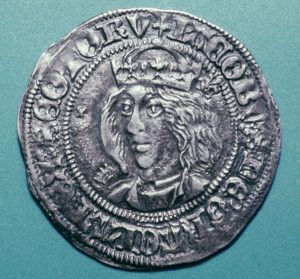
He was also the first king to have his likeness emblazoned on coins and, in 1487, gained an indult (special permission) from the Pope, giving the Scottish crown the right to choose who would take up top ecclesiastical positions. We’ll set aside his ability to irritate the papacy by choosing people they disapproved of and, in an unrelated event, the ultimate loss of Berwick to the English.
As a man, he was a contradiction. While pious – and said to have had no illegitimate children and only one mistress –
he was also known for being lustful and, as Timothy Venning writes in The Kings & Queens of Scotland, he was possibly “as autocratic (and tyrannical) as any of the dynasty.”
His poor judgement, reclusive nature, close ties with the perceived “wrong” people and what Boardman calls “the catastrophic breakdown of personal relationships within the royal dynasty” all contributed to the two major rebellions he faced in 1482 and, fatally, in 1488. James died following the Battle of Sauchieburn in June 1488, in which irked nobles supplanted James III for his heir, would-be James IV.
James IV of Scotland
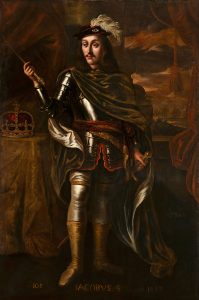
Having come to the throne at the expense of his father, aged just 15, James IV became king in a position of strength, and shrewdly aligned himself with those who put him there.
In contrast to his father, Boardman says James IV was, “an active and popular monarch, noted for his good personal relations and sociability with the great magnates of the realm.” His interest in everything from social and economic policies to bolstering Scotland’s military – specifically the navy – played well with both subjects and nobles.
He was also very visible. According to Boardman, he travelled regularly from Edinburgh on pilgrimages and judicial and social tours that took him through different regions of the kingdom.
He offered patronage widely, establishing a vibrant, high-fashion Renaissance court that was the place to be. Meanwhile, his avid interest in art, law, and science, as well as literature, led to him licensing Scotland’s very first printing press in 1507, which produced a series of booklets containing Scots poems for all who could read.

On which note, as well as founding the University of Aberdeen and Edinburgh’s Royal College of Surgeons, he implemented the Education Act of 1496. This made Scotland the first country in the world to demand compulsory schooling, albeit for landowners only.
He also left his mark in some of the royal palaces we see today – Falkland Palace remains one of the finest Renaissance residences in Scotland – and his talent for diplomacy was shown through the extended period of peace at home. The beautifully named 1502 Treaty of Perpetual Peace with England, and James’s subsequent marriage to Margaret Tudor, Henry VIII’s sister, went a long way to ensuring cordial relations. For a time.
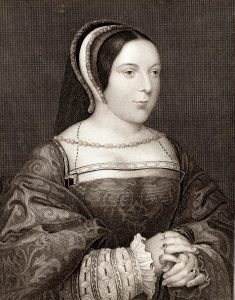
The Auld Alliance brought this to an end when James invaded England against Henry VIII for his role in the Holy League against France. On 9 September 1513 at the Battle of Flodden, James IV, Scotland’s most revered medieval ruler, became the last monarch to die in battle in Great Britain.

James V of Scotland
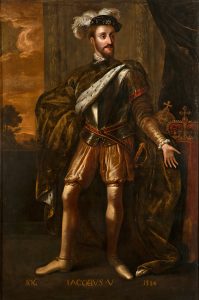
James IV’s heir (James V of Scotland, naturally) was a mere 17 months old when he was crowned on 21 September 1513. Under the guardianship of the Council of Regents, he was hot property, coveted by agenda-laden nobles with either pro-English
or pro-French tendencies.
This tumultuous childhood scarred the young king, and he developed a mistrust of the nobility, evidenced in their harsh treatment once his reign commenced independently in 1528.
James also ruled at a time of seismic change courtesy of his uncle, Henry VIII’s, break away from the Catholic church. He inadvertently found himself in a position of great strength with the papacy, keen to retain their Scottish faithful.
Like his father, James V of Scotland was graced with the title of Defender of the Faith in 1537 and given further freedom to choose who to place in positions of ecclesiastical power. Nonetheless, events south of the border inevitably sowed the seeds of what would later become Scotland’s own Reformation.
As for his Renaissance interests, James followed suit with heavy patronage of the arts. He had a fondness for music, himself a lute player, and pored over works by poets and writers. He employed skilled craftsmen in his palaces, initiating elegant alterations at the Palace of Holyroodhouse.
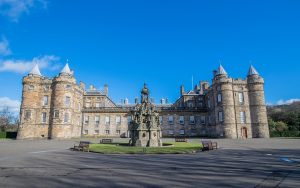
He was also a man of pleasure, delighting in everything from sports (Falkland Palace has one of the oldest real tennis courts in Britain) and wildlife (Holyrood had a fine collection of exotic animals) to lovers (he had at least nine illegitimate children and countless mistresses).
Perhaps a hangover from his childhood, James V of Scotland had an interest in the judiciary as well as centralising power. He established the Court of Sessions in 1532 and enacted legislation to help protect society’s most vulnerable.
According to Venning, this included curtailing “excessive rents, arbitrary evictions and paying mortuary duties to the Church.” He also established an advocate for the poor; not for nothing was he known as the “poor man’s king.”
Another complex character, James could be both ruthless and kind-hearted. He dealt swift blows to the Border Reivers, burned early Protestants at the stake and centralised royal authority in the far reaches of Scotland.
Added to which, he had no interest in pursuing peaceful relations with England, something underlined with his marriages, first to Madeleine of France, who died of tuberculosis, and subsequently, Mary of Guise.
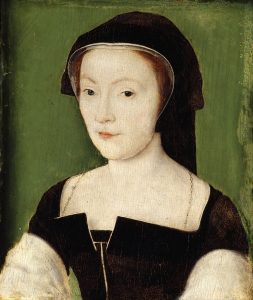
Relations with his English relatives soured to the point of the Battle of Solway Moss in 1542, where the Scots suffered a crushing defeat. Although James wasn’t at the battle, he died weeks later aged 30, when his only surviving legitimate child, a daughter, was just six days old.
His death marked the end of centuries of kings, opening the door to Scotland’s most controversial queen, Mary, Queen of Scots, and the dark days of the Reformation which lay ahead.
Don’t miss next issue’s piece on one of our nation’s most iconic rulers: Mary, Queen of Scots.
Read more:

SCOTLAND MAGAZINE
Published six times a year, every issue of Scotland showcases its stunning landscapes and natural beauty, and delves deep into Scottish history. From mysterious clans and famous Scots (both past and present), to the hidden histories of the country’s greatest castles and houses, Scotland‘s pages brim with the soul and secrets of the country.
Scotland magazine captures the spirit of this wild and wonderful nation, explores its history and heritage and recommends great places to visit, so you feel at home here, wherever you are in the world.
